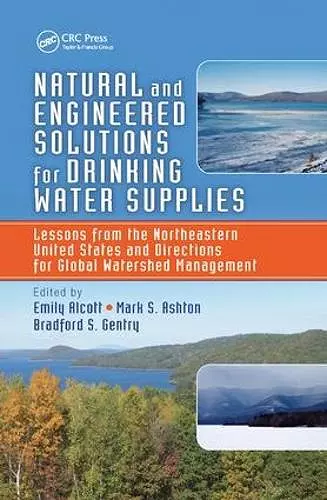Natural and Engineered Solutions for Drinking Water Supplies
Lessons from the Northeastern United States and Directions for Global Watershed Management
Mark S Ashton editor Bradford S Gentry editor Emily Alcott editor
Format:Paperback
Publisher:Taylor & Francis Ltd
Published:21st Nov '18
Currently unavailable, and unfortunately no date known when it will be back
This paperback is available in another edition too:
- Hardback£110.00(9781466551640)

Illuminating opportunities to develop a more integrated approach to municipal water system design, Natural and Engineered Solutions for Drinking Water Supplies: Lessons from the Northeastern United States and Directions for Global Watershed Management explores critical factors in the decision-making processes for municipal water system delivery. The book offers vital insights to help inform management decisions on drinking water supply issues in other global regions in our increasingly energy- and carbon-constrained world.
The study evaluates how six cities in the northeastern United States have made environmental, economic, and social decisions and adopted programs to protect and manage upland forests to produce clean drinking water throughout their long histories. New York, New York; Boston and Worcester, Massachusetts; New Haven and Bridgeport, Connecticut; and Portland, Maine have each managed city watersheds under different state regulations, planning and development incentives, biophysical constraints, social histories, and ownerships.
Some of the overarching questions the book addresses relate to how managers should optimize the investments in their drinking water systems. What is the balance between the use of concrete/steel treatment plants (gray infrastructure) and forested/grassland/wetland areas (green infrastructure) to protect surface water quality? The case studies compare how engineered and/or natural systems are employed to protect water quality.
The conclusions drawn establish that it makes environmental, economic, and social sense to protect and manage upland forests to produce water as a downstream service. Such stewardship is far more preferable than developing land and using engineering, technology, and artificial filtration as a solution to maintaining clean drinking water. Lessons learned from this insightful study provide effective recommendations for managers and policymakers that reflect the scientific realities of how forests and engineering can be best integrated into effective watershed management programs and under what circumstances.
ISBN: 9781138374720
Dimensions: unknown
Weight: 453g
303 pages